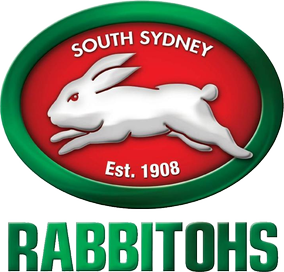For organizations that are not restricted by extensive regulatory requirements, continuous deployment should always remain the end goal. Still, there are many cases where it is unfeasible to release every feature – this makes continuous deployment unpractical. Before the advent of CI, the integration process was symbolized by lengthy time frames. Continuous integration helps take the manual effort out of the equation so developers can dedicate time for innovation, rather than mundane tasks. With automated tests constantly being run on any changes made to the main repository, CI helps reduce the overall risk by making detection easier. Promising everything your team needs, Spacelift allows DevOps teams to manage complex cloud infrastructures simultaneously, providing visibility and collaboration.
The Optimized Pipeline Speed increases the execution speed that benefits other competitors and provides a higher quality experience to the customers. There is always a need to optimize the execution speed of the CI pipeline. This makes it simple for the developers to push changes and experiment with some new ideas that improve the user experience. In this scenario, bugs can be fixed quickly and efficiently as soon as they are discovered. Both the code review and pull requests are essential for sharing knowledge among the engineering team. Test-Driven Development refers to writing the test cases before performing any actual coding.
TeamCity
Continuous Integration and Continuous Delivery are essential elements of the software development lifecycle. However, some DevOps teams are still looking for the right tool to https://globalcloudteam.com/ incorporate into their operations. When selecting a CI/CD tool, it’s essential to evaluate your unique business needs and then pick the right tool that best fits your project.

Integrity is a simple Ruby-built CI server that builds, tests, and verifies your code as soon as you publish new commits. The settings are easy to navigate and simple enough for teams of all sizes to get up and running. Hudson CI is written in Java based on servlet containers such as Tomcat and GlassFish. Hudson seamlessly supports your favorite SCM tools, the likes of Git, CVS and Subversion.
Bitbucket Pipeline
It supports software configuration management integration with software like SVN, CVS, Mercurial, Git, Monotone, and BitKeeper. When you configure jobs and resources to form a pipeline, it automatically detects various resource versions and simultaneously adds new builds to the queue. Concourse can quickly scale itself to simple as well as complex channels. CI speeds up the entire coding and development process with instant bug detection and correction, leading to faster software releases. Continuous Delivery is a DevOps practice that refers to the building, testing, and delivering improvements to the software code. The most important part of the CD is that the code is always in a deployable state.
Developers share each new piece of code in a merge request, which triggers the pipeline that performs all the validation tasks prior to merging the changes within the source code repository. Built-in Git and Mercurial branching let Bamboo automate the process of merging branches from both version control systems. Bamboo https://globalcloudteam.com/top-7-continuous-integration-tools/ takes care of the branch detection, building, testing, and merging tasks, in order to deploy code continuously to production or staging environments, based solely on the branch name. The DevOps tools can be categorized into five groups depending on their purpose in the particular stage of the DevOps lifecycle.
Continuous Integration vs Continuous Deployment vs Continuous Delivery
It also offers integration with several IDEs including, Eclipse, IntelliJ IDEA and Visual Studio. It is designed from scratch, and hence, it supports pipelines and thereby removes build process blockages by enabling parallel execution of tasks. The process of CI is followed by the continuous delivery process that aims at automated delivery of changes to the users. When it comes to creating and developing complex software and programs, more often than not, an entire team is behind the creation and development of the code rather than a single individual. Each developer uses different platforms and tools to develop a code.

Moreover, It’s a self-contained Java-based program that you can run out of the box. Installation and maintenance is very easy but still required by the user. Harness works with every language of your choice, allowing you to use the solution for any framework. It reduces manual steps to help teams move faster without learning various products. Build the pipeline the way you want, run steps sequentially or parallelly, group each step together, add execution at every level, and define the failure strategy.
#What Is Continuous Integration?
The tool includes many features such as application management, agile planning and management, dev collaboration, and open source management. This robust versioning engine manages and secures any kind and size of file. It also provides replication for high-performance developments and builds. Change the way you look at quality assurance using Assertible’s infrastructure for continuous testing and monitoring of your apps, websites, and API’s. The DevOps model was created to improve collaboration between development and operations teams to produce better software for the customer.
- Buildbot is a “Python-based CI framework” that automates the compile and test cycles to validate code changes, then automatically rebuild and test the tree after every change.
- CI forms the first part of the pipeline and is typically required for progressing to CD.
- They are typically triggered by commits to the codebase and integrate with version control systems and code repositories as well as other DevOps tools.
- Every feature for continuous integration and continuous delivery is tailored to the demands of enterprise solutions, and enhanced data security is one of them.
- It is a high-scoring Cloud Native Computing Foundation project covered by the Apache 2.0 license.
- When considering what continuous delivery tools to use in your software build process, think about scope and cost.





































